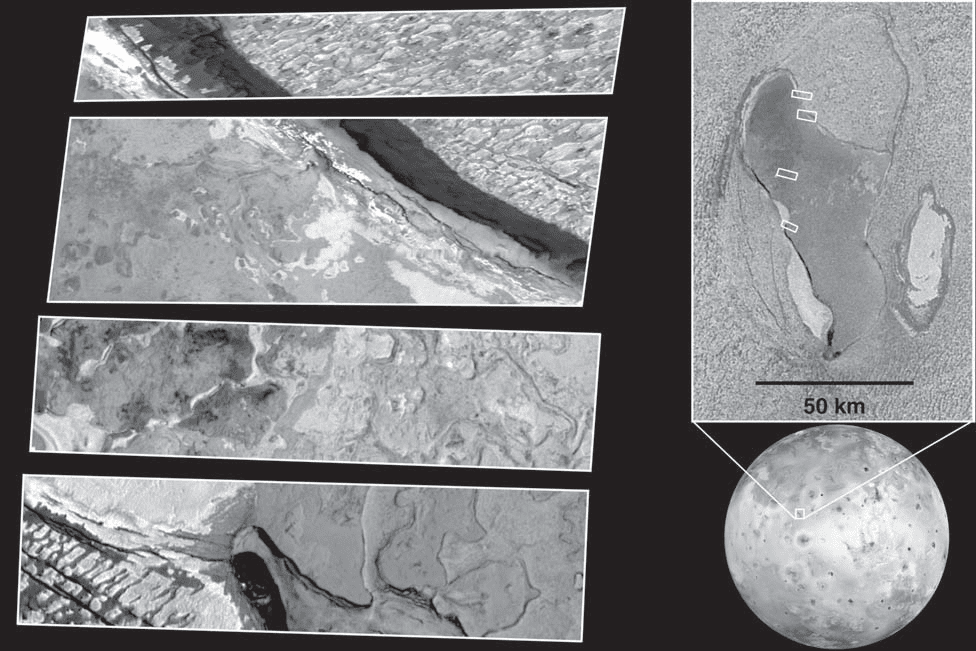Since it was first discovered more than four hundred years ago by Galileo Galilei, Jupiter’s innermost moon Io has played an important part in the development of astronomy. Still with secrets to be revealed, a team of US scientists have recently formulated the first complete global geologic map of Jupiter’s satellite.
The moon of Io is the most geologically active object in the Solar System, as result of tidal heating from friction generated within Io’s interior as it is pulled between Jupiter and the other Galilean satellites. This intense, tremendous heat ends up getting released through Io’s surface, hence the great volcanic activity – the moon is considered to be 25 times more volcanically active than Earth.
“One of the reasons for making this map was to create a tool for continuing scientific studies of Io, and a tool for target planning of Io observations on future missions to the Jupiter system,” explained David Williams of ASU.

The map was published by the US Geological Survey (USGS) with the help of Arizona State University (ASU), and depicts the characteristics and relative ages of some of the most geologically unique and active volcanoes and lava flows ever documented in the Solar System. Included in the highly detailed, color map one can study paterae (caldera-like depressions or individual volcanic centers), lava flow fields, tholi (volcanic domes), and plume deposits, in various shapes, sizes and colors, as well as high mountains and large expanses of sulfur- and sulfur dioxide-rich plains. The mapping also identified 425 paterae, or individual volcanic centers. Curiously enough, though, not one impact crater was observed on the geological map of Io.
“Io has no impact craters; it is the only object in the Solar System where we have not seen any impact craters, testifying to Io’s very active volcanic resurfacing.”
There are hundreds of active volcanic spots on Jupiter’s satellite, but in spite of this, either they’re all mostly concentrated together in a small surface, or the geological and geographical changes resulted from their volcanic activity is relatively limited, being restricted to less than 15 percent of the surface.
“Our mapping has determined that most of the active hot spots occur in paterae, which cover less than 3 percent of Io’s surface,” Williams noted.
“Lava flow fields cover approximately 28 percent of the surface, but contain only 31 percent of hot spots. Understanding the geographical distribution of these features and hot spots, as identified through this map, are enabling better models of Io’s interior processes to be developed.”
The complete geological map of Io is actually a mosaic, as it was mapped and characterized using four distinct global image. These image mosaics, generated by the USGS, combine the best images from NASA’s Voyager 1 and 2 missions (acquired in 1979) as well as the Galileo orbiter (1995-2003).
You can download the map at UGSC. [via physorg]
Was this helpful?



